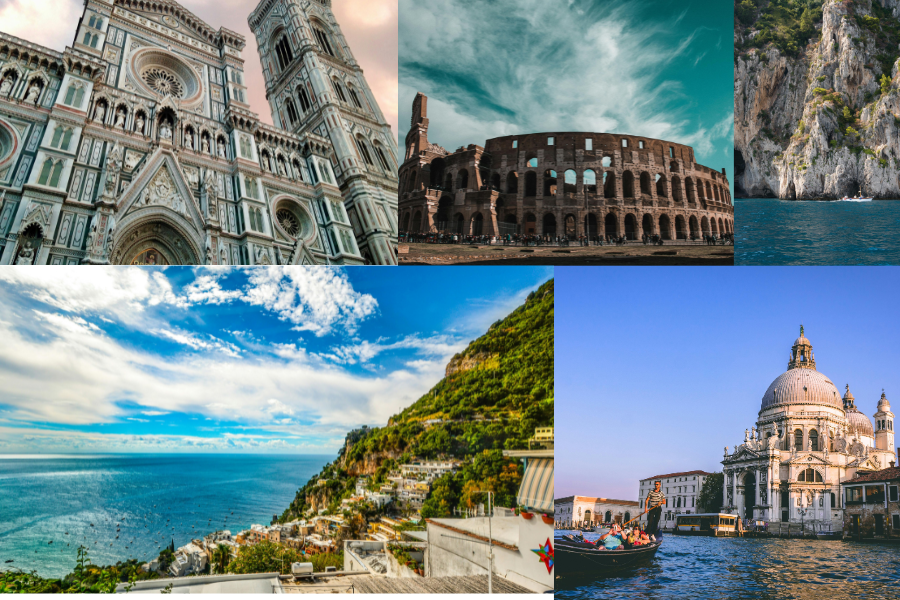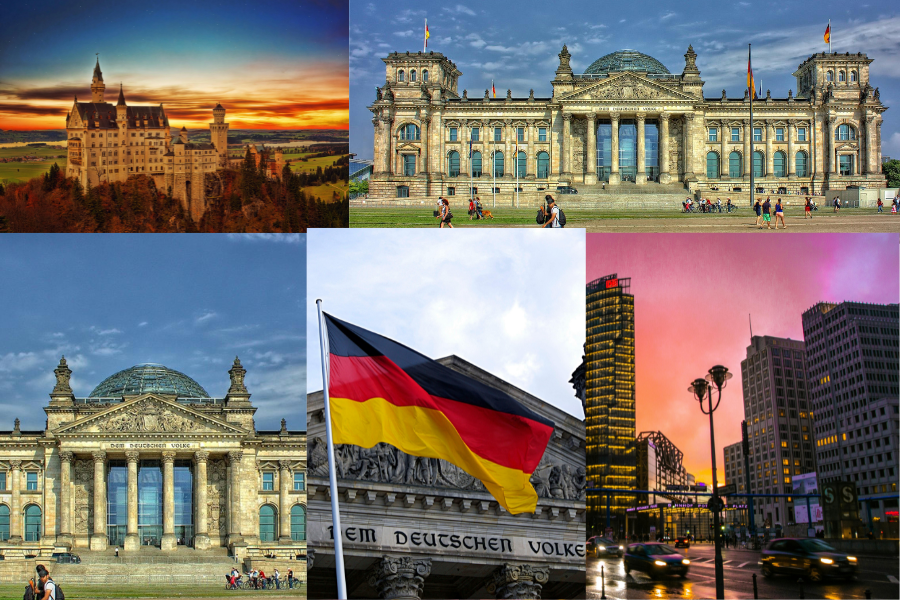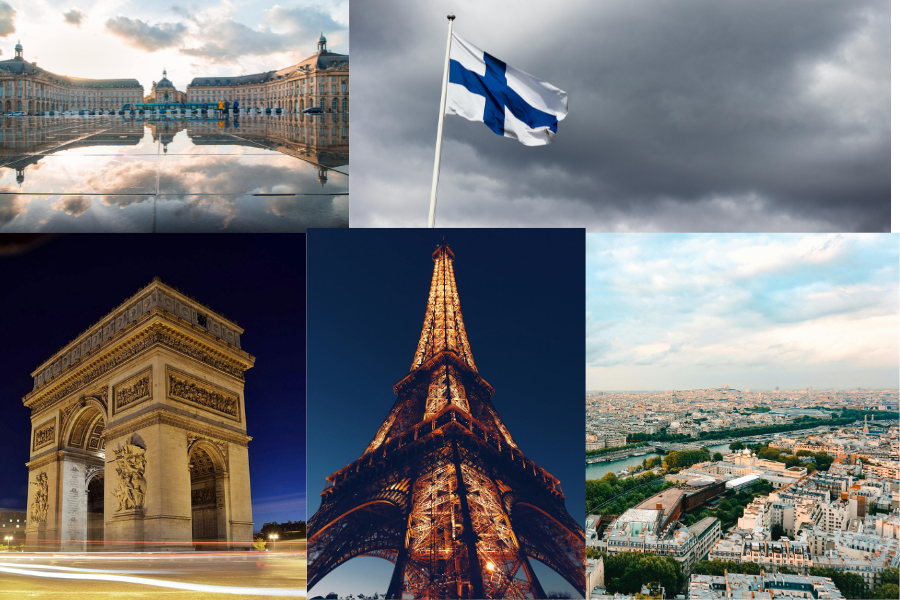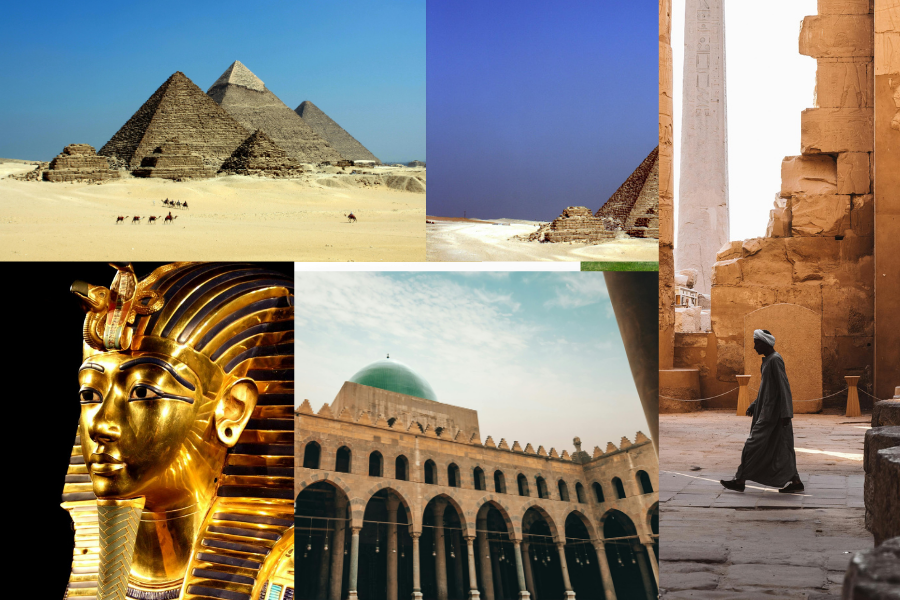Unveiling the Enchantment of Italy: Your Travel Guide for 2024
Italy, a captivating country shaped by history, art, and exquisite cuisine, beckons travelers seeking an unforgettable adventure. From the ancient ruins of Rome to the romantic canals of Venice, and the picturesque villages nestled amidst rolling hills, Italy offers something for every taste.
Planning Your Italian Getaway:
Essential Information:
Navigating Entry Requirements: Italian Visas for Travelers
Planning an Italian adventure? Understanding visa requirements is crucial for a smooth and hassle-free entry. Here’s a breakdown to help you navigate the process:
Do You Need a Visa?
The good news: most visitors from visa-exempt countries** don’t require a visa for stays under 90 days**. This includes citizens from the United States, Canada, Australia, New Zealand, and most European countries.
However, it’s essential to confirm your visa-exempt status before booking your trip. The following resources can help:**
- Visa Checker of the Italian Ministry of Foreign Affairs: https://vistoperitalia.esteri.it/home/en
- Website of the nearest Italian embassy or consulate: Locate the embassy or consulate in your country through the Italian Ministry of Foreign Affairs website: https://www.esteri.it/en/servizi-consolari-e-visti/
Who Needs a Visa?
Travelers who fall outside the visa-exempt category will need to acquire a visa before entering Italy. This applies to individuals from countries not on the exemption list, those planning to stay longer than 90 days, or those engaging in specific activities like work or study.
Types of Visas for Italy:
- Schengen Visa: This visa allows entry into Italy and other Schengen Area countries for short stays (up to 90 days) for tourism, business, or visiting family/friends.
- National Visa: This visa is required for stays exceeding 90 days or for specific purposes like work, study, or research.
Applying for a Visa:
- Contact the nearest Italian embassy or consulate for specific requirements and application procedures.
- The application process usually involves submitting a completed application form, passport photos, proof of travel and accommodation, proof of financial means, and relevant supporting documents based on the visa type.
- Visa processing times can vary, so plan accordingly and submit your application well in advance of your trip.
Important Considerations:
- Double-check all visa requirements well before your trip to avoid any last-minute complications.
- Ensure your passport is valid for at least six months beyond your intended stay in Italy.
- Travel insurance is highly recommended, especially for unforeseen circumstances during your trip.
Understanding Currency: Navigating Euros and Spending Wisely
Planning your Italian getaway? Grasping the local currency is key to smooth financial transactions during your travels. Here’s what you need to know about using Euros in Italy:
The Official Currency:
Italy, along with most other European Union countries, uses the Euro (EUR) as its official currency. This simplifies currency exchange and allows for easy spending across participating nations.
Bills and Coins:
Euros come in denominations of both banknotes (bills) and coins:
- Banknotes: €5, €10, €20, €50, €100, €200, and €500 (although €200 and €500 notes are less commonly used).
- Coins: €1, €2, €5, €10, €20, €50, and €1, €2, €5 cents.
Exchanging Currency:
You have several options for exchanging your home currency for Euros:
- Exchange your currency before departure: This can be done through your local bank or a currency exchange service.
- Use ATMs in Italy: Look for ATMs displaying the Mastercard, Visa, or Maestro logos for wider network compatibility. Be mindful of potential withdrawal fees, and check with your bank beforehand.
- Exchange services at airports or tourist areas: While convenient, these options often offer less favorable exchange rates.
Using Your Credit or Debit Card:
Many establishments in Italy accept major credit cards (Visa, Mastercard) and debit cards with international payment network logos for purchases. However, inform your bank about your travel plans to avoid potential issues with card usage abroad.
Tipping:
Tipping in Italy is generally not mandatory and already factored into restaurant bills through a service charge. However, leaving a small gratuity (5-10% of the bill) for good service is always appreciated.
Saving Money:
- Carry cash for smaller purchases, public transportation, and street vendors, where card payments might not be accepted.
- Compare prices before purchasing, especially at tourist attractions.
- Consider purchasing a travel card for discounted public transportation fares.
- Embrace local markets and smaller shops for potentially better deals.
- Take advantage of free activities like exploring historical sites or visiting museums with free admission days.
Perfect Season for Your Italian Escape: A Guide to Weather and Crowds
Italy, a land of vibrant culture, captivating history, and breathtaking landscapes, beckons travelers throughout the year. But when is the ideal time to embark on your Italian adventure? Here’s a breakdown of the seasons, considering both weather and crowd patterns:
Spring (March-May):
- Weather: Spring paints Italy with blooming flowers, offering pleasant temperatures averaging between 15°C (59°F) and 25°C (77°F). Ideal for exploring cities and participating in outdoor activities without the scorching summer heat.
- Crowds: Spring sees a gradual increase in visitors compared to winter, but it’s still relatively less crowded compared to the peak summer season. This allows for a more relaxed and authentic experience.
Summer (June-August):
- Weather: Summer brings hot and sunny days, with average temperatures ranging from 25°C (77°F) to 32°C (90°F). Perfect for enjoying the beaches and soaking up the sun.
- Crowds: This is the peak tourist season in Italy, with major cities and popular destinations experiencing significant crowds. Expect longer lines, higher accommodation prices, and busier transportation options.
Autumn (September-November):
- Weather: Autumn offers a welcome respite from the summer heat, with comfortable temperatures ranging from 18°C (64°F) to 28°C (82°F). Ideal for sightseeing and outdoor activities without the sweltering temperatures.
- Crowds: The crowds gradually decrease as autumn progresses, offering a more balanced experience with pleasant weather and fewer tourists compared to the summer peak.
Winter (December-February):
- Weather: Winter brings cooler temperatures averaging between 5°C (41°F) and 12°C (54°F), with occasional rain or snowfall in some regions. Ideal for exploring Christmas markets and experiencing the festive atmosphere.
- Crowds: This is the low season for tourism, offering significantly fewer crowds and potentially lower travel and accommodation costs. However, some attractions and businesses may have reduced hours or closures during this time.
Choosing the Right Season for You:
The ideal time to visit Italy ultimately depends on your preferences and priorities:
- Pleasant weather and moderate crowds: Opt for spring (March-May) or autumn (September-November).
- Warm weather and beach activities: Choose summer (June-August), but be prepared for larger crowds.
- Festive atmosphere and fewer crowds: Consider winter (December-February), keeping in mind potential closures and cooler temperatures.
Getting Around:
Soaring into Italy: Exploring Flight Options for Your Dream Getaway
Italy, a land of rich history, captivating culture, and breathtaking landscapes, beckons travelers from across the globe. But how do you get there? Here’s a comprehensive guide to navigating your flight options:
Finding the Perfect Flight:
- Major Airlines: Numerous reputable airlines offer flights to Italy, including national carriers like Alitalia and airlines from various regions like Lufthansa, Emirates, and British Airways.
- Departure Airports: Explore flight options from major international airports in your home country or nearby locations. Consider factors like price, convenience, and flight duration.
- Destination Cities: Italy boasts several major airports serving popular tourist destinations:
- Rome Fiumicino Airport (FCO) serves Rome and surrounding areas.
- Milan Malpensa Airport (MXP) serves Milan and northern Italy.
- Venice Marco Polo Airport (VCE) serves Venice and the Veneto region.
- Florence Peretola Airport (FLR) serves Florence and Tuscany.
- Naples Capodichino Airport (NAP) serves Naples and southern Italy.
Additional Considerations:
- Connecting Flights vs. Direct Flights: Connecting flights can be cheaper but often involve longer travel times with one or more layovers. Direct flights offer convenience and faster travel but may be pricier.
- Budget Airlines: Low-cost carriers like Ryanair, easyJet, and Wizz Air offer budget-friendly options, but be mindful of potential baggage fees and additional charges.
- Flight Comparison Websites: Utilize online resources like Google Flights, Kayak, or Skyscanner to compare prices, filter options based on your preferences, and find the best deals on flights to Italy.
Pro Tips for Savvy Travelers:
- Book your flights in advance, especially during peak season (summer) or for popular destinations, to secure better prices and avoid last-minute surges.
- Consider flying into a secondary airport near your desired destination. Smaller airports can sometimes offer cheaper flights compared to major hubs.
- Be flexible with your travel dates and times to potentially find more affordable options.
- Sign up for email alerts from airlines and travel websites to receive notifications about price drops and special offers.
Unveiling Italy’s Transportation Tapestry: Trains, Cars, and Beyond
Italy offers a diverse transportation network, catering to various travel styles and budgets. Here’s a breakdown of two popular options, allowing you to choose the one that best suits your adventure:
1. Navigating Italy’s Efficient Train Network:
- Extensive Reach: Italy boasts a well-developed and reliable train network, connecting major cities and towns throughout the country.
- High-Speed Options: Experience swift journeys on high-speed trains like Frecciarossa and Italo, whisking you between major cities in record time.
- Regional Trains: Explore smaller towns and soak in the scenery with regional trains, offering frequent connections and a more affordable option.
- Purchasing Tickets: Tickets can be purchased online on the official websites of Trenitalia (https://www.trenitalia.com/en.html) and Italo (https://www.italotreno.it/), at train stations, or through authorized travel agents.
- Benefits: Train travel offers a comfortable and convenient way to traverse Italy, allowing you to relax and enjoy the scenic countryside views. It’s also an eco-friendly option and avoids potential traffic congestion.
2. Exploring Italy at Your Own Pace with a Rental Car:
- Freedom and Flexibility: Renting a car empowers you to explore the Italian countryside, charming villages, and hidden gems at your own pace, creating a personalized itinerary.
- Scenic Drives: Embark on picturesque journeys along winding roads through rolling hills and breathtaking landscapes.
- Considerations: Ensure you have a valid international driver’s license. Be mindful of traffic regulations, especially in larger cities.
- ZTL Zones: Be aware of ZTL (limited traffic zones) in city centers, where car access is restricted during specific times. Research these zones and obtain temporary permits if necessary.
- Parking: Parking can be challenging in some city centers. Utilize designated parking areas and be mindful of parking restrictions.
Choosing the Right Option:
The ideal choice boils down to your travel style and preferences:
- For speedy connections between major cities and a comfortable travel experience, opt for the train network.
- For the freedom to explore hidden gems at your own pace and experience the Italian countryside, consider car rentals.
Beyond Trains and Cars:
- Buses: Intercity and local buses offer a budget-friendly option for traveling shorter distances, especially in rural areas.
- Ferries: Explore the beauty of the Italian coastline and islands by utilizing ferry services connecting mainland Italy with various destinations like Sardinia, Sicily, and the Amalfi Coast.
Remember, Italy’s diverse transportation network caters to various needs and budgets. By understanding your travel style and planning accordingly, you can unlock the perfect way to experience the magic of this captivating country.
Embark on an Italian Odyssey: Unveiling the Country’s Enchanting Treasures
Italy, a land steeped in history, artistic brilliance, and breathtaking landscapes, beckons travelers seeking an unforgettable adventure. From the ancient ruins of Rome to the romantic canals of Venice and the picturesque villages nestled amidst rolling hills, Italy offers an array of experiences for every taste. Here’s a glimpse into five awe-inspiring destinations that shouldn’t be missed on your Italian adventure:
1. Rome: The Eternal City
- Immerse yourself in history: Walk in the footsteps of emperors and gladiators at the Colosseum, marvel at the architectural marvel of the Pantheon, and toss a coin into the Trevi Fountain for a guaranteed return.
- Explore Vatican City: Step into the heart of Catholicism and witness the grandeur of St. Peter’s Square and Basilica, housing exquisite Renaissance art and Michelangelo’s masterpieces.
- Savor authentic Roman cuisine: Indulge in classic dishes like pasta alla carbonara, saltimbocca alla romana, and gelato, the perfect ending to any exploration.
2. Florence: Cradle of the Renaissance
- Embrace artistic treasures: Witness the architectural masterpiece of the Duomo cathedral, housing Brunelleschi’s iconic dome. Wander through the Uffizi Gallery, showcasing Renaissance masterpieces by Botticelli, Michelangelo, and Raphael.
- Cross the Ponte Vecchio: Admire the iconic bridge adorned with goldsmith shops, a testament to Florence’s rich history and craftsmanship.
- Savor Tuscan delights: Immerse yourself in the region’s culinary scene, indulging in fresh pasta, flavorful sauces, and world-renowned Tuscan wines.
3. Venice: City of Canals
- Glide through romantic canals: Experience the magic of Venice aboard a gondola, serenaded by the gentle rhythm of the water against the city’s ancient buildings.
- Step into St. Mark’s Square: Immerse yourself in the vibrant atmosphere of this central square, marveling at the architectural beauty of St. Mark’s Basilica and the Doge’s Palace, a symbol of Venetian power and artistry.
- Explore hidden gems: Wander through the narrow alleyways, discover hidden bridges, and soak in the unique charm of this enchanting city.
4. Cinque Terre: A Cinque Terre Paradise
- Hike along picturesque trails: Embark on breathtaking hikes connecting the five colorful villages perched on cliffs overlooking the shimmering Mediterranean Sea.
- Unwind in charming villages: Explore the vibrant hues and unique character of each village, from the vibrant colors of Manarola to the dramatic cliffside location of Corniglia.
- Savor fresh seafood: Enjoy delectable seafood dishes, capturing the essence of the region’s culinary heritage and spectacular coastal setting.
5. The Amalfi Coast: Breathtaking Beauty
- Discover charming seaside towns: Explore the picturesque towns of Positano, Sorrento, and Amalfi, adorned with colorful houses cascading down dramatic cliffs.
- Cruise along the scenic coastline: Embark on a boat tour and witness the stunning beauty of the Amalfi Coast, characterized by hidden coves, pristine beaches, and vibrant marine life.
- Indulge in regional specialties: Savor the local cuisine, featuring fresh seafood, lemons, and delicious pasta dishes, all complemented by stunning views.
Unveiling Italy’s Hidden Gems: Exploring Beyond the Tourist Trail
While Rome, Florence, and Venice may be the first places that spring to mind when considering an Italian adventure, the country boasts a treasure trove of hidden gems waiting to be discovered. Venture beyond the usual tourist trail and explore these captivating destinations for a truly authentic Italian experience:
1. Tuscany: A Tapestry of Rolling Hills and Medieval Charm
- Escape to scenic landscapes: Immerse yourself in the rolling hills of Tuscany, dotted with vineyards, olive groves, and charming cypress trees.
- Explore medieval towns: Discover the rich history and architectural beauty of towns like Siena, renowned for its Palio horse race and stunning Piazza del Campo, and San Gimignano, nicknamed the “Manhattan of the Middle Ages” for its distinctive towers.
- Indulge in culinary delights: Savor the essence of Tuscan cuisine, known for its fresh, seasonal ingredients, hearty pastas, and world-renowned wines like Chianti and Brunello di Montalcino.
2. Lake Garda: A Lakeside Paradise
- Unwind on the largest Italian lake: Relax on the shores of Lake Garda, surrounded by picturesque towns, charming villages, and stunning mountain scenery.
- Engage in outdoor activities: Hike or bike along scenic trails, explore the lake by boat, or try windsurfing and other water sports.
- Discover historical gems: Visit the Scaliger Castle in Sirmione, explore the Grotte di Catullo Roman ruins, or delve into the history of the Vittoriale degli Italiani, a complex dedicated to the Italian poet Gabriele D’Annunzio.
- Savor local specialties: Sample the fresh fish dishes specific to the lake region, accompanied by local wines and olive oil.
3. Piedmont: A Region of Wine, Truffles, and Historic Charm
- Embark on a culinary adventure: Indulge in the world-renowned wines of Piedmont, including Barolo, Barbaresco, and Barbera, produced in the Langhe hills.
- Uncover the secrets of truffles: Explore the region’s unique truffle hunting traditions and savor the exquisite flavor of these prized delicacies.
- Immerse yourself in history: Discover the grandeur of Turin, the first capital of Italy, and explore its royal palaces, museums, and historical landmarks.
- Explore hidden gems: Visit the Sacra di San Michele, a stunning abbey perched on a mountaintop, or discover the beauty of the Langhe villages, renowned for their wine production and breathtaking scenery.
Tapestry: Food, Culture, Language, and Beyond
Italy beckons not just as a tourist destination, but as an opportunity to truly immerse yourself in its unique culture and way of life. Here are some ways to embrace the Italian experience:
1. Savor the Delights of Italian Cuisine:
- A Culinary Journey: Each region boasts distinct culinary traditions, offering a diverse array of flavors and experiences.
- Fresh and Seasonal Ingredients: Italian cuisine emphasizes fresh, seasonal produce, creating dishes that are both simple and bursting with flavor.
- Beyond Pizza and Pasta: While pizza and pasta are iconic, explore regional specialties like fresh seafood dishes along the coasts, rich stews and risottos in northern Italy, and delectable cured meats and cheeses throughout the country.
- Indulge in Local Wines: Italy boasts a renowned wine culture, with each region producing unique varietals. Pair your meals with local wines for an authentic taste of the region.
2. Immerse Yourself in Rich Culture and Art:
- A Legacy of History: Italy is a living museum, with ancient ruins, historical landmarks, and architectural marvels waiting to be explored.
- From Renaissance Masterpieces to Modern Art: Immerse yourself in the country’s artistic heritage, from the iconic works of Michelangelo and Da Vinci to contemporary art galleries and museums.
- Experience Local Traditions: Attend cultural events, witness historical reenactments, or participate in traditional festivals to gain a deeper understanding of Italian life.
3. Embrace the Language:
- Unlocking New Connections: Learning even a few basic Italian phrases can significantly enhance your experience. Locals appreciate the effort and are often more willing to help and engage in conversation.
- Enriching your Experience: Basic phrases for greetings, directions, ordering food, and expressing gratitude can go a long way in navigating daily life and connecting with locals.
- Beyond Words: Learning the language allows you to delve deeper into the culture, understand local humor, and appreciate the nuances of Italian communication.
Beyond these core aspects, here are some additional ways to embrace the Italian experience:
- Shop at local markets: Immerse yourself in the sights, sounds, and aromas of local markets, where you can find fresh produce, artisanal goods, and unique souvenirs.
- Learn about local crafts: Discover traditional crafts like ceramics, leatherworking, and glassblowing, and appreciate the skills passed down through generations.
- Engage with the people: Strike up conversations with locals, learn about their daily lives, and gain a deeper understanding of the Italian perspective.
- Embrace the slow pace: Italy prioritizes savoring life’s moments. Relax, enjoy leisurely meals, and appreciate the beauty that surrounds you.
Important Considerations:
- Respect local customs and traditions.
- Be mindful of crowds, especially during peak season.
- Learn about scams and be cautious of pickpockets in crowded areas.
Start planning your Italian adventure today and discover the magic that awaits!
Additional Resources:
- Italian National Tourist Board: https://www.enit.it/en
- Lonely Planet Italy: https://www.lonelyplanet.com/italy
- Travel + Leisure Italy: https://www.travelandleisure.com/trip-ideas/editors-favorite-places-in-italy
Remember, this is just a starting point, and Italy has so much more to offer. With its captivating beauty, rich history, and delicious food, Italy is sure to leave you with lasting memories.











